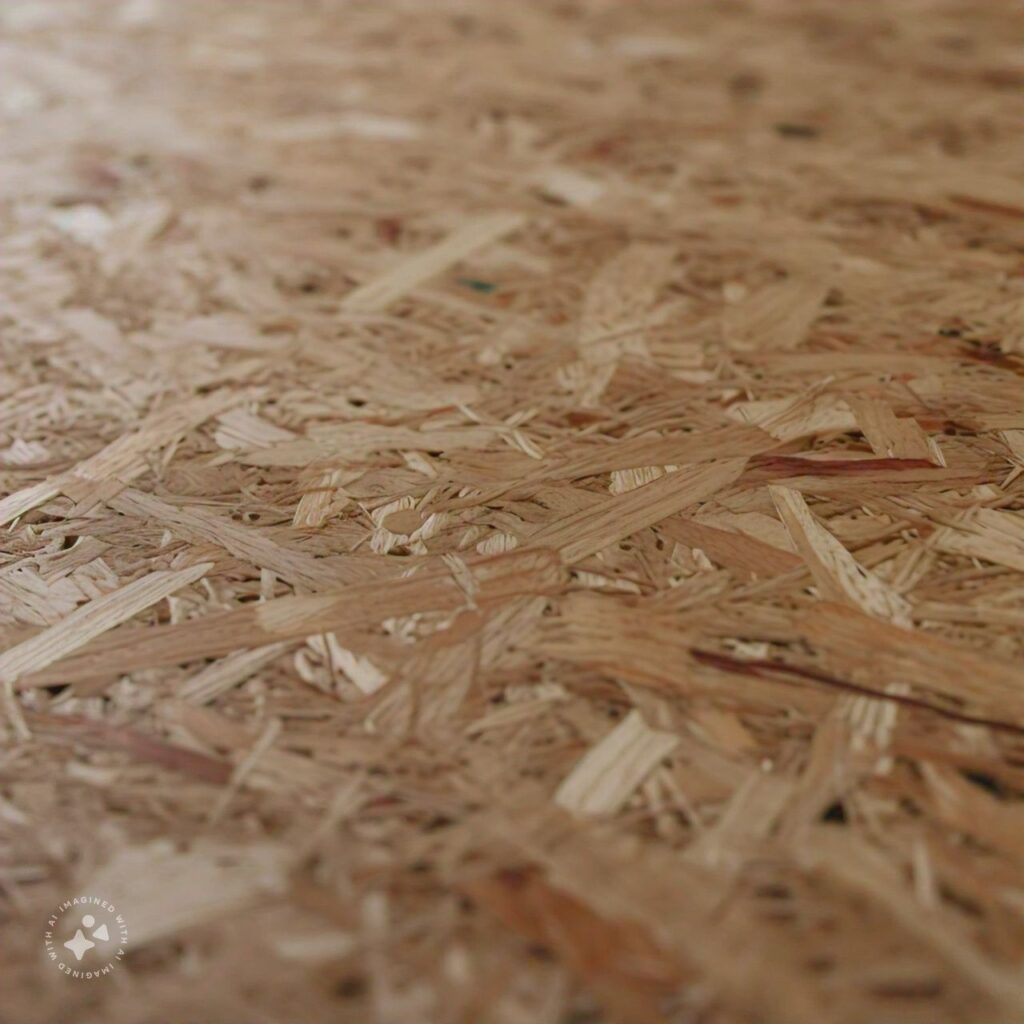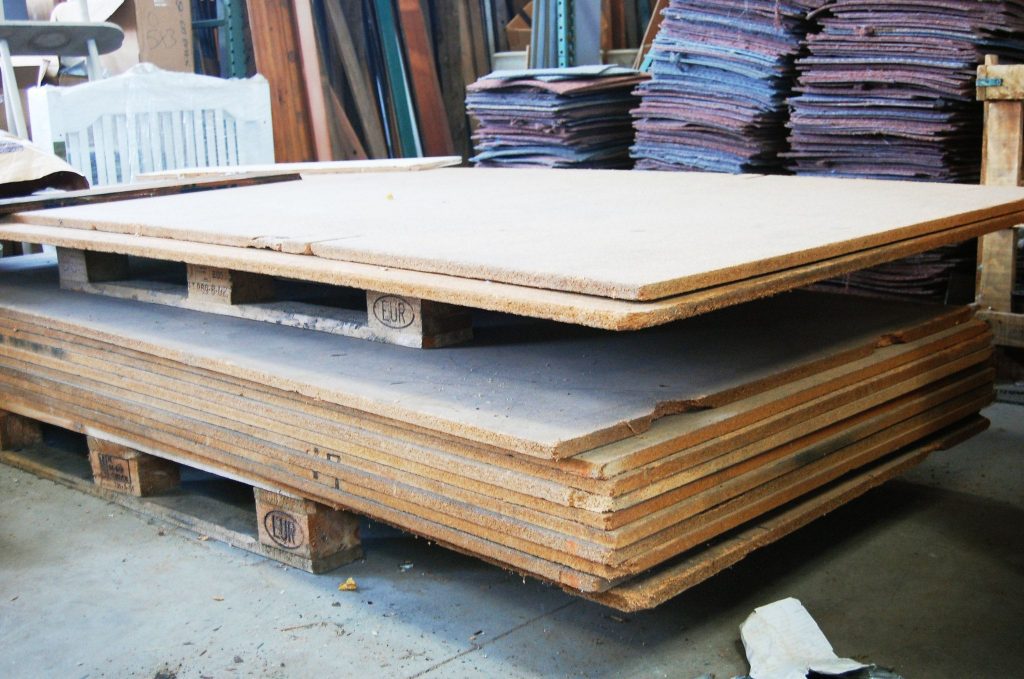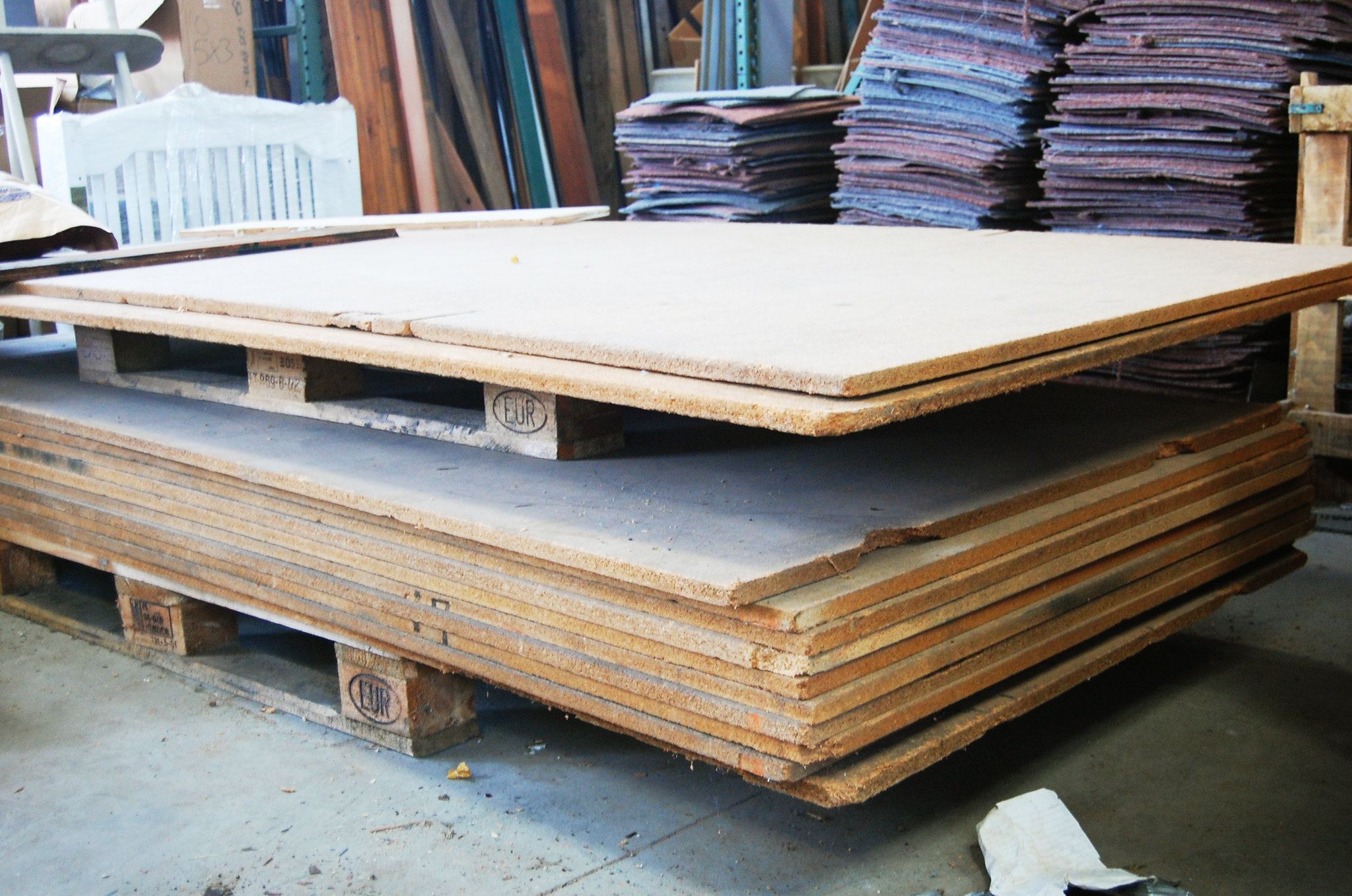The term “plywood” applies only to solid plywood – an engineered wood product made of wood veneers glued together with the wood in cross-grain texture, perpendicular to the adjacent layers of suitable material. That plywood still exists, but the term can be applied to any engineered wood product sold in sheets today. This includes such products as particle board, MDF, and OSB.
Selecting the right one of these engineered wood products is an essential part of a successful project. While many tasks can be built from any of them, that’s not necessarily what you want to do. Product costs, strengths, and finish vary amongst them, making some lumber products entirely inappropriate in some circumstances, either due to the price of the plywood product or the results it gives you.
Yet many people confuse these products regularly, making it easy to choose the wrong one and end up with less-than-satisfactory project results. Knowing the basic differences between them and what they are best for makes it easy to make the right choice and end up with great material for a project that will last for years.
Let’s Start with Plywood
As already mentioned, plywood is an engineered wood product consisting of an odd number of wood veneers laid crosswise to one another and bonded together with a resinous glue.
This manufacturing process and technique provide a consistent, robust product that can withstand stress and weight. Depending on the type of plywood used and the environment, projects made of plywood can easily last 30 to 40 years as roof sheathing and longer when used in indoor furniture making.
There is considerable variance even within the plywood category alone, as many types of plywood products exist. These range from construction-grade plywood at the most industrial and commercial grade to the low-cost end to high-grade hardwood plywood products used to manufacture fine furniture and cabinetry. Specialized plywood products have been developed for marine use (making boats) and aircraft manufacture and are used in curved applications, as well as others.
Advantages of Plywood
- Plywood is more potent and can carry more weight than particle board or any other engineered wood product.
- Plywood is less susceptible to moisture damage than particle board
- Plywood can be manufactured with high-grade wood veneer face and back, making it usable in the manufacture of fine furniture
- Plywood is available in a wide range of grades, making it possible to buy inexpensive or more expensive products, as the project demands
- Plywood is available in a wide range of thicknesses
- Plywood holds screws well
- Plywood is an extremely stable product, highly resistant to shrinkage, warping, twisting, and cracking.
- Plywood can be cut into many different shapes
- Plywood is easily painted or stained & varnished
- Plywood is more economical than solid wood, available in much larger sizes, and considerably easier to work with than laminating board together to get a large, flat surface.
Disadvantages of Plywood
- Plywood is more expensive than particle board, OSB, or MDF
- Plywood is more difficult to cut without splintering than particle board
- Plywood edges show the layers of veneer used in its manufacture, some of which are always seen as end grain. Therefore, it pretty much needs to be covered with something, such as a veneer edge banding
- Plywood often splinters along the edges during shipment
- Lower “construction grades” of plywood do not provide a smooth surface, so they must be hidden or covered by laminate or veneer.
What About Particle Board?
Particle board is the cheapest engineered wood panel product, considerably cheaper than plywood. The main reason particle boards are stronger and cheaper than plywood is that they are made of waste from the sawmill, unlike plywood, where the veneers are cut specifically to make the plywood.
Any wood waste can be turned into particle board and plywood, but it is predominantly made of sawdust and wood chips. These are mixed with glue and then pressed into thin sheets cut to size.
Since most materials are microscopic, no long fibers give them strength. Since wood chips and sawdust are used in its manufacture, the core of the particle board and plywood has many small voids, even though the surface is relatively smooth.
Of all the materials in the engineered wood products, the particle board is the most susceptible to water damage in its unfinished state.
It should always be protected from water, even when bringing it home from the lumberyard. As long as it is protected from water, it is incredibly stable and less likely to warp or bow than plywood.
Advantages of Particle Board
- A particle board is the most cost-effective option when strength is not required.
- The particle board has a smooth, flat surface, ideal for attaching laminates or wood veneer.
- The particle board does not dent or distort easily.
- Particle boards are relatively lightweight when compared to other engineered wood products.
- The particle board has tiny air pockets, giving it thermal and sound insulation properties.
- Particle board is eco-friendly, as it is made of material that would otherwise be waste material from the sawmill.
The Disadvantage of Particle Board
- Particle board has less strength than plywood or other engineered wood panels.
- Particle board readily absorbs moisture, causing swelling and damaging the surface finish.
- Particle boards cannot support heavy loads. When used for shelves, the weight limit of ¾” thick particle board is 25 lbs. for every three unsupported feet. For more weight, thicker particle boards or supports must be used.
- Particle boards must be covered with laminate or painted, as the surface does not provide an attractive finish when varnished.
- The particle board does not have excellent screw retention capability. Several specialty fasteners have been developed for use with it, specifically for the furniture industry.
Interestingly, despite its disadvantages, a lot of low-cost furniture is made of particle boards, wood glued to the board, usually covered with a thin vinyl laminate. Almost all kit furniture the buyer needs to assemble is made of particle board.
But that isn’t all; many furniture manufacturers use particle board extensively in their products, even in high-quality furniture pieces, to keep costs down.

Deciding Between Particle Board and Plywood
Particle board is an excellent product for furniture where strength is not an issue. Vertical panels on furniture pieces, such as the side panels in a dresser carcass, are ideal applications for particle boards because the panels do not have to support any weight.
However, this requires using a laminate, veneer, or paint finish on a smoother surface of the furniture piece since the particle board cannot be stained and varnished to match the wood.
Children’s furniture is commonly made from particle board, which is often painted or covered with laminate. The smooth finish of the particleboard works well for either laminate or paint, and vinyl edging can be installed to cover up the voids in the center of the particleboard panel.
When strength is needed, it’s hard to beat plywood. The multi-layer sandwich, with wood grains crossing each other, makes plywood the strongest of engineered panels. However, this comes at a cost-effective, higher out-of-pocket cost.
If the plywood is not covered with laminate or veneer, even more expensive plywood is required, as the low-cost construction-grade plywood does not have a good surface finish.
When used in fine furniture and cabinetry, hardwood plywood provides a look equivalent to other pieces of solid wood. While the grain in the face veneer is not the same as in quarter-sawn boards, it is still attractive enough to be stained and varnished. Even when plywood furniture is used with solid pieces of hardwood, the average consumer doesn’t recognize the difference in grain.
What About Other Engineered Wood Products?
The two other major engineered wood products that can be confused with plywood and particle board are OSB and MDF. These products are more expensive than particle board materials and stronger than particle board, but they are less expensive than plywood while not being quite as strong.
OSB
Oriented Strand Board (OSB), commonly called “chipboard,” is made of thin wood chips, almost like shavings, rather than sawdust. This gives it longer strands than particle board, making it stronger.
While it is not obvious to casual observation, OSB is made in three layers. The top and bottom layers are laid with the wood fibers oriented to the longer direction of the sheet, and the thicker inner and middle layers are made with the wood fibers perpendicular to the face, much like plywood.
While there are three layers, each consists of many thin pieces, making it possible for a sheet per square foot of OSB to consist of 50 actual layers of wood, all bonded together. Between the orientation of the wood fibers and the many thin layers of material, OSB is strong enough that the building code allows it to be used in place of plywood for subflooring, roof sheathing, and wall sheathing.
Even though OSB can be used as a replacement material for plywood in many construction applications, it can’t be used as a substitute for particle board. The way OSB is manufactured leaves a rough surface, with the various chips not all at the same level. It is not a suitable substrate for gluing laminate or veneer, and painting it brings out unevenness in the surface.
MDF
Medium-density fiberboard (MDF) differs from particle board furniture and OSB because it is made from wood fibers. Waste wood is broken down into individual fibers and then pressed together with glue to make a sheet, much like a particle board furniture part.
The big difference is that the longer fibers produce a much stronger product without the voids common to particle board furniture and boards.
Furniture manufacturers who want a higher quality product with more strength than particle board versus plywood often choose MDF. The consistency of the product makes it extremely easy to mill with any power tool, and the surface is resistant to tear-out, unlike particle board vs. plywood. Nails hold screws, and screws hold better in MDF than in particle board vs. plywood or OSB.
The surface of MDF is smooth enough for painting or can be covered with laminate or veneer. But the surprising thing is that the edges can be routed, sanded, and then painted, providing a clean, sculpted edge, much like the smooth finish you can receive with wood. That can’t be done with particle board or OSB.

4’x8′ particle board sheets, Our United Villages
Failure of Any Plywood Product
All plywood products are made of the same materials: wood fibers and glue. Even the types of glues used in marine plywood furniture and their manufacture are limited, with the same glues used in different grades of plywood furniture and engineered wood products. These glues are generally the weak point of the material, eventually causing failure.
Few adhesives are genuinely waterproof, although most are water-repellant. However, even waterproof glues can come loose when decomposition starts breaking up the surface of various materials to which they are bonded.
The combination of water resistance to this decomposition and water wearing away at the glue itself eventually leads to the delamination of the plywood product, causing its failure.
However, the production process of plywood and particle board delamination is stronger than that of the other engineered wood products we’ve discussed, and it is considerably different. When plywood delaminates, layers of smaller particles of wood veneer glued together remain, at least until they decompose.
When particleboard delaminates, the wood particles can fall off since nothing can hold them in place. This can quickly lead to the connection between the panel and the supporting structure being lost.
Another way that delamination affects plywood products is by causing the edges to swell. This is especially true of particleboard, although it can also occur with OSB and plywood. Water absorbs through the edge of the panel first, where it can swell wood fibers, making the edge thicker. This is how some roofs look like they are cupped, with the edges higher than the rest.
Installing a galvanized steel drip rail along the edge of the panel eliminates this problem in roofing. Something similar needs to be done to protect the edges of these panels whenever they are used outdoors, where they are exposed to rain and moisture.
If a drip edge or something similar cannot be used, the edges should be well-sealed for water-resistant and moisture-resistant protection.




